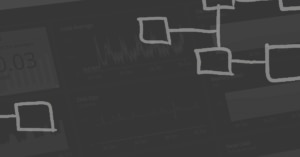Where are you? Halfway through this 6-part series exploring a new reference model for IT infrastructure security!
As you learned in earlier posts, this model breaks the security infrastructure landscape into four domains that each contain six categories. While today’s domain may seem simple, it is an area that I constantly see folks getting wrong--both in my clients and in the news. So, let’s carefully review the components that make up a comprehensive identity and access security system:
Domain: Identity & Access
Your castle walls are no use if the attacking hoard has keys to the gate. In IT infrastructure, those keys are user credentials. Most of the recent high-profile breaches in the news were simple cases of compromised passwords. We can do better, and the tools in this domain can help.
The categories in the identity and access domain are; single sign-on (SSO – also called identity and access management, IAM), privileged account management (PAM), multi-factor authentication (MFA), cloud access security brokers (CASB), secure access (user VPN), and network access control (NAC).
Category: SSO (IAM)
The weakest link in almost every organization’s security posture is its users. One of the hardest things for users to do (apparently) is manage passwords for multiple devices, applications, and services. What if you could make it easier for them by letting them log in once, and get access to everything they need? You can! It’s called single sign-on (SSO) and a good solution comes with additional authentication, authorization, accounting, and auditing (AAAA) features that aren’t possible without such a system – that’s IAM.
Category: PAM
Not all users are created equal. A privileged user is one who has administrative or root access to critical systems. Privileged account management (PAM) solutions provide the tools you need to secure critical assets while allowing needed access and maintaining compliance. Current PAM solutions follow “least access required” guidelines and adhere to separation-of-responsibilities best practices.
Category: MFA
Even strong passwords can be stolen. Multi-factor authentication (MFA) is the answer. MFA solutions combine any of the following: something you know (the password), something you have (a token, smart phone, etc.), something you are (biometrics, enrolled device, etc), and/or somewhere you are (geolocation) for a much higher level of security. Governing security controls, such as PCI-DSS, and industry best practices require MFA to be in place for user access.
Category: CASB
According to Gartner: “Cloud access security brokers (CASBs) are on-premises, or cloud-based security policy enforcement points, placed between cloud service consumers and cloud service providers to combine and interject enterprise security policies as the cloud-based resources are accessed. CASBs consolidate multiple types of security policy enforcement. Example security policies include authentication, single sign-on, authorization, credential mapping, device profiling, encryption, tokenization, logging, alerting, malware detection/prevention, and so on.” If you are using multiple SaaS/PaaS/IaaS offerings, you should probably consider a CASB.
Category: SECURE ACCESS (VPN)
Your employees expect to work from anywhere. You expect your corporate resources to remain secure. How do we do both? With secure access. Common components of a Secure Access solution include a VPN concentrator and a client (or web portal) for each user. Worth noting, the new category of software defined perimeter (SDP) services mentioned in
part 2 often look and act a lot like an always-on VPN. In any case, the products in this category ensure that users can securely connect to the resources they need, even when they’re not in the office.
Category: NAC
Let’s say a criminal or a spy is able to get into your office. Can they join the Wi-Fi or plug into an open jack and get access to all of your applications and data? Less nefarious, what if a user computer hasn’t completed a successful security scan in over a week? Network access control (NAC) makes sure the bad guys can’t get onto the network and that the security posture of devices permitted on the network is maintained. Those users or devices that don’t adhere to NAC policies are either blocked or quarantined via rules an administrator configures. Secure access and NAC are converging, but it’s too early for us to collapse the categories just yet.
One More Domain!
While we’ve made a lot of progress, our journey through the domains of IT infrastructure security isn’t over yet. In the next post, we’ll peer into the tools and technologies that provide us with visibility and control. Even that isn’t the end though, as we’ll wrap the series up with a final post covering the model as a whole, including how to apply it and where it may be lacking. I hope you’ll continue to travel along with me!








